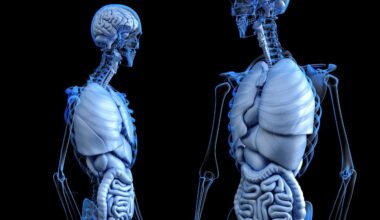The Science of Muscle Recovery After Strength Training
Muscle recovery is crucial after strength training, as it helps athletes improve their performance and longevity in their respective sports. The recovery process ensures that muscles heal and grow stronger, allowing for consistent and effective workouts. Proper recovery techniques can reduce muscle soreness, enhance flexibility, and minimize the risk of injury. The science behind muscle recovery involves understanding the physiological adaptations that occur after exercise. One essential aspect is muscle protein synthesis, which is the process through which new muscle protein is formed. This process is stimulated by nutrition, particularly protein intake, and the timing of that intake. In addition, hydration plays a vital role in recovery as it aids in metabolic functions and nutrient transport. Rest and sleep, commonly underestimated, also significantly impact recovery. Not only do they allow physical repair, but they also promote mental recovery which is essential for the training cycle. Therefore, establishing an effective recovery routine is foundational for athletes aiming for peak performance and optimal health throughout their training journey.
Muscle soreness, scientifically referred to as delayed onset muscle soreness (DOMS), often follows rigorous strength training. This phenomenon typically surfaces 24 to 72 hours post-exercise, reflecting microscopic damage to muscle fibers. While DOMS can signal a growing and adapting body, it should be monitored closely. Strategies like foam rolling, stretching, and gradual progression in weights can help manage soreness. Furthermore, cooling down after a workout has shown benefits for recovery. Engaging in light activities can promote blood flow, accelerating the repair process. Additionally, certain recovery modalities, such as ice baths or heat therapy, are believed to aid in reducing muscle soreness and inflammation. However, these methods may vary in effectiveness depending on individual responses. Nutrition plays a crucial role during recovery; thus, it’s essential to replenish lost nutrients. Consuming a balanced meal including carbohydrates, proteins, and healthy fats can replenish energy stores and facilitate muscle repair. Overall, understanding DOMS and implementing targeted recovery strategies can enhance recovery and lead to better training outcomes.
The Role of Nutrition in Muscle Recovery
Nutrition is a fundamental aspect of muscle recovery after strength training, heavily influencing the recovery process and overall performance. Consuming adequate macronutrients, particularly proteins and carbohydrates, is crucial to facilitating muscle repair. Proteins provide the building blocks necessary for muscle tissue recovery, while carbohydrates supply the energy required to replenish glycogen stores depleted during workouts. Studies suggest that a post-workout meal rich in these macronutrients, ideally consumed within a two-hour window, maximizes recovery and muscle synthesis. In addition to the macronutrients, micronutrients also play important roles. Vitamins and minerals such as vitamin C, zinc, and magnesium support various physiological processes, including immune function that can be compromised during intense training periods. It’s essential to focus on whole foods based on balanced diets instead of relying solely on supplements. Foods such as lean meats, dairy, fruits, and vegetables contain a wealth of nutrients that aid recovery. Hydration should not be overlooked; drinking sufficient water ensures optimal nutrient transportation and bodily functions, helping to combat fatigue and promote faster recovery.
Rest and adequate sleep are often the overlooked heroes of muscle recovery after strength training. Muscle recovery primarily occurs during sleep, as the body enters restorative phases. Growth hormone release peaks during deep sleep, promoting muscle repair and growth. Unfortunately, many people prioritize workouts over necessary rest, which can lead to overtraining, fatigue, and poor performance. Establishing a sleep routine can make a significant difference in recovery times. Aim for 7-9 hours of quality sleep each night to allow the body to fully recuperate. Moreover, napping post-exercise may also benefit recovery by allowing the body to relax and rejuvenate. On rest days, incorporating light activities such as yoga or walking can keep blood circulating and help alleviate soreness. Mindfulness and stress-reducing practices can further enhance recovery by promoting psychological rejuvenation, which is essential for peak performance. Understanding the balance between strenuous workouts, recovery time, and mental well-being is vital for serious athletes. By prioritizing rest, athletes can enhance their performance and decrease the likelihood of injury.
Active Recovery Techniques
Active recovery techniques have garnered attention for their efficacy in enhancing muscle recovery after intense strength training. Instead of rigid rest, incorporating low-intensity exercises like walking, cycling, or swimming can facilitate blood flow, improve range of motion, and expedite the removal of metabolic waste products. Active recovery helps in alleviating soreness, ensuring muscles remain engaged without added stress. This method encourages gentle movement, enhancing flexibility and readiness for the next training session. Additionally, practices such as yoga or light stretching sessions can be highly beneficial, as they not only enhance physical recovery but also promote mental relaxation. Timing is key, as engaging in active recovery ideally should commence shortly after an intense workout. The duration and intensity should be kept light to ensure that the focus remains on recovery rather than further exertion. It is crucial to listen to the body’s signals; if additional fatigue arises during active recovery, a balance between rest and activity needs to be established. Overall, implementing active recovery can contribute to sustained athletic performance and well-being.
The impact of hydration on muscle recovery cannot be overstated. During strength training, significant amounts of water and electrolytes are lost through sweat, vital for muscle function and overall bodily processes. Dehydration can impair performance and delay recovery, making it crucial to restore lost fluids promptly. Athletes should aim for balanced hydration throughout the day, not just during workouts. Electrolyte solutions or sports drinks may be warranted, especially during prolonged or intense sessions, to ensure adequate replacements. Additionally, monitoring urine color can be a simple method to gauge hydration levels; a light yellow indicates proper hydration, while darker shades signify the need for fluid intake. Strategies like drinking small amounts frequently may prove more effective than large quantities at once. Post-workout hydration should be followed up with a well-balanced meal that includes fluids to nourish the body adequately. Taking proactive steps in hydration management can significantly reduce muscle soreness and enhance recovery rates. Both hydration and nutrition act as foundational elements that contribute to sustainable training regimens for enhanced performance.
Conclusion: Training Smart for Optimal Recovery
In conclusion, optimizing muscle recovery after strength training involves a multifaceted approach that combines proper nutrition, rest, hydration, and active recovery techniques. By implementing effective recovery strategies, athletes can enhance their performance, reduce the risk of injury, and attain their fitness goals more efficiently. Understanding the science behind muscle recovery allows individuals to tailor their training programs according to their specific needs. Establishing a well-rounded routine that factors in the body’s response to strength training is essential for long-term success. Insufficient recovery not only hampers performance but can also lead to burnout and prolonged injuries. Therefore, integrating recovery practices should be perceived as an integral part of the training program instead of an afterthought. As the sports community continues to evolve, emphasizing recovery techniques will be vital in achieving peak performance. By prioritizing smart training and recovery strategies, athletes can elevate their training experience, fostering continuous improvement and fitness longevity. Properly balancing workloads and recovery will allow for driven and passion-fueled athletic pursuits.
Ultimately, the journey towards improved strength and endurance is an ongoing process, requiring commitment to both training and recovery. A well-structured regime that incorporates all aspects of recovery is essential in supporting athletes and fitness enthusiasts in their quest for excellence. Strong muscles develop through not just resistance training but also through adequate rest and recovery strategies that respect the body’s limits. Awareness of the principles of muscle recovery engenders profound respect for this critical period, allowing optimal adaptation and progress towards fitness aspirations. Training with intelligent recovery methods can lead to significant attributes such as enhanced strength, reduced injuries, and increased agility over time. Athletes should remain open to adjusting their recovery tactics based on personal experiences since different strategies work for different individuals. Emphasizing the importance of listening to the body will ultimately foster a healthier connection with fitness. Overall, embedding rich recovery routines into the training framework will accentuate a positive cycle of performance enhancement. This cycle encourages not only physical growth but also mental resilience within any athletic journey.


